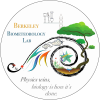Reports
Contents
| Title: | Sherman Barn - NDVI (SRS, Planet) | ||||||||||||||||||||||||||
| Date: | 2018-07-11 - 2020-07-01 | ||||||||||||||||||||||||||
| Data File: | SB_NDVI.csv TASB_SRS.csv |
||||||||||||||||||||||||||
| Refers to: | SB,882103036,882103061 | ||||||||||||||||||||||||||
|
Various sensors measuring NDVI have been installed across the Delta sites over the last several years. At some sites, the SRS sensors from Decagon/METER have been drifting low, so I wanted to compare them with other NDVI measurements.
For some sites with I also compared GCC with the various NDVI values to see how much GCC values varied year over year. Photos were taken by a variety of cameras: Netcam Stardot cameras (the official camera of the Phenocam Network®), Canon point-and-shoot cameras with custom firmware, or a Raspberry Pi camera. I used Joe's datafetch tool to calculate daily average mid-day values of NDVI and GCC from the various sensors. Mid-day values included data from 11:00 to 13:00, 5 values a day. I despiked the data in Excel.
See reports for other Delta sites here: East Pond / Sherman Wetland Temp Tower (both sites had same set of SRS sensors) Twitchell Alfalfa / Sherman Barn (both sites had same set of SRS sensors) Â
ÂFigure 1. Sherman Barn NDVI. Broadband and SRS data match pretty well during the wet winter season, but SRS NDVI is about 0.05 lower than broadband NDVI during the dry summer and fall seasons. Not much PL data yet, but it has a weird peak in July 2018. I need to check this data. Â Figure 2. Incoming bands of SRS sensor. No obvious decay. Â Figure 3. Outgoing bands of SRS sensor. Seems reasonable. Â Figure 4. Timeseries of incoming bands over the whole lifetime of the SRS sensor, first at Twitchell Alfalfa (Feb 2017-May 2018), then at Sherman Barn (Jul 2018-Jul 2020). I wanted to plot this because there were only a few years of data at Sherman Barn, and the longer time series might help us see decay more easily. Happily, no obvious decay seen from this sensor over the 3-4 years it was used. Â Figure 5. Time series of outgoing bands over the whole lifetime of the SRS sensor, first at Twitchell Alfalfa (Feb 2017-May 2018), then at Sherman Barn (Jul 2018-Jul 2020). I assume the seasonal maxes are the same within each site, and I don't see any obvious decay. Â Figure 6. Red reflectances from SRS and PL data. PL reflectance is markedly low in July 2017 than SRS reflectance. Â Figure 7. NIR reflectances from SRS and PL data match pretty well. SRS reflectance increases about 2 weeks earlier in winter 2018. Â
Figure 8. Linear regression between SRS and other 2 NDVI methods. There's not much PL data, but SRS and broadband NDVI have a good fit with R2=0.94. Â Figure 9. Timeseries of GCC and SRS data. Annual patterns seem reasonable. GCC_13-15 is the average GCC from 13:00 to 15:00, and GCC_11-13 is the average GCC from 11:00 to 13:00. Both GCC and SRS have similar timing of winter increase and early spring peak; GCC seems to start decreasing in the late spring slightly earlier than NDVI starts decreasing. Â Â
Figure 10. Linear regression between GCC and SRS data. Fit is good, R2=0.94, so here GCC could be a good proxy for NDVI. |
|||||||||||||||||||||||||||
| |

